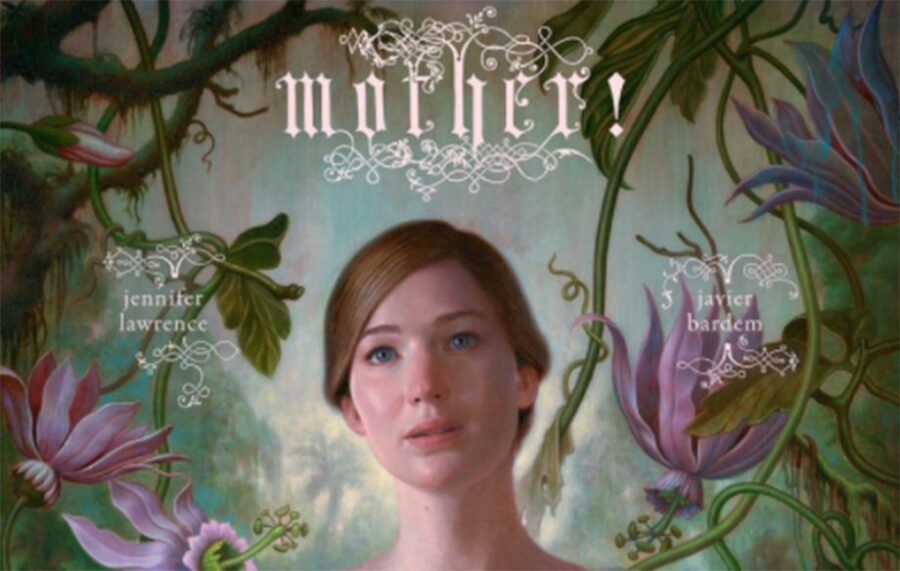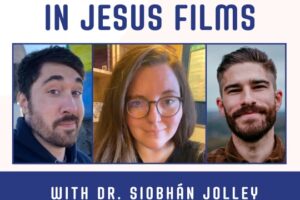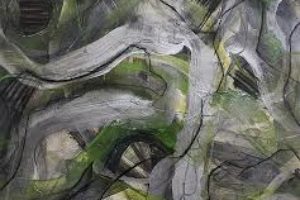SPOILERS AHEAD! RUN FOR THE HILLS!
Darren Aronofsky’s new film, mother!, is absolutely stunning. I was mesmerized and blown away. Let me say at the outset that one’s enjoyment of this movie is almost entirely based upon two factors: (a) knowing as little about the film as possible before seeing it, and (b) actually figuring out what you’re watching to some extent. If you know what it’s about beforehand, you may find it predictable. If you don’t figure it out while you’re watching, you will probably find it far too esoteric.
I went into the film with a fairly clean slate. I knew I’d probably enjoy it because I love Aronofsky’s work. True to the style of Black Swan and Noah, the film focuses intensely upon Jennifer Lawrence’s character (who is credited as ‘mother’). This kind of intensely personal approach heightens the emotion and tension of Aronofsky’s films. What is also true to his style, is the way that Aronofsky twists a narrative and looks at it from a unique angle. But in the case of mother!, Aronofsky sheds new light not upon a narrative, but a metanarrative.
As most of you who have seen it probably realized, or as some of you realized after reading reviews of the film, mother! is an allegorical take on creation. It is about Mother Earth and the way that humans abuse, destroy, and exploit her great work. In many ways, mother! is a perfect follow-up to Noah, which takes the narrative of the Noah story (in its broader biblical and Jewish traditions) and utilizes it for our present Zeitgeist, interpreting the character of Noah as a kind of ecological superhero. The twist in that film (SPOILERS!!!) is poignant for the way that it imagines Noah as someone who recognizes the devastation that humans have bring to the earth as part of their exploitative self-understanding as creatures designed to rule and reign over creation in tyrannical fashion. And so Noah determines that he and his family must die off with the rest of humanity in order to ensure that humanity never again seeks to exploit the goodness of creation. It’s a fascinating and intriguing twist on the biblical narrative in the light of contemporary concerns. And if you come to the story of mother! with an appreciation for the ecological commentary of Noah and for the subtle critique of Christian interpretation of scripture for political, economic, and ecological exploitation, you are primed for another self-reflective and self-critical journey.
One of the ways that Aronofsky invites the viewer on this journey of self-reflection is through the many biblical allusions throughout the narrative. Most of you probably picked up on these allusions that Aronofsky utilizes. For the sake of brevity I’ll list them succinctly below (and this list is more representative than exhaustive):
1) The new house is rebuilt from the ashes of the former house (Gen. 1.2 “and the earth was without form and void”)
2) The house is called a paradise by ‘mother’ and is set within an Edenic landscape.
3) Ed Harris’ character (credited as ‘man’) is told not to go into the upper room “without Him,” and in particular he is not supposed to touch a sacred object.
3) ‘Man’ and ‘Him’ go on walks together (God walking in the garden in Gen. 3.8).
4) ‘Man’ has a wound in his side (as he is throwing up with ‘Him’ in the bathroom) and Michelle Pfeiffer’s character (credited as ‘woman’) appears the next day (cf. Gen. 2.21–23).
5) After ‘man’ and ‘woman’ enter the room in disobedience and break the crystal they were not supposed to touch, ‘Him’ boards up the entry to the room, which is reminiscent of the angel being placed at the garden to guard people from entering in (cf. Gen. 3.23–24).
6) After the disobedience of ‘man’ and ‘woman’ they have sex in their room, and ‘woman’ answers the door in her underwear, signifying the nakedness of Adam and Eve (Gen. 3.7).
7) The younger brother and older brother (as they’re credited) fight and ultimately the older kills the younger, spouting things about how the parents loved the younger better. The older brother has a mark of blood upon his forehead reminiscent of the mark of Cain (Gen. 4.15). The blood of the younger literally stays and reappears at multiple points, reminiscent of the language of the blood of Abel crying out (Gen. 4.10; cf. Heb. 12.24). In fact, during the poetic eulogizing by ‘Him’ he refers to the voice of the younger son crying out, and speaks of the “wandering” of the older brother in the wilderness, just as Cain was said to wander (Gen. 4.12, 14).
8) Noah’s Flood ensues when the people sit on the sink against the request of ‘mother.’
9) Loads and loads of people pile into the house, flooding into a central location, reminiscent of the Tower of Babel.
10) After ‘mother’ and ‘Him’ have their son, the people bring gifts (cf. the wise men in Matthew’s Gospel).
11) Ash is rubbed over the right eyebrow of people in the house in a manner that harkens to the Ash Wednesday practice of wiping crosses on foreheads.
12) The people create images of ‘Him’ and fill the entire house, a statement about idolatry.
13) The people kill the son of ‘mother’ and ‘Him’ and eat the baby (a disturbing take on the death of Jesus and the Eucharist).
14) The house and everyone in it is finally destroyed by fire in apocalyptic fashion (from the underground basement no less).
Once the biblical allusions become apparent, the viewer is able to see how Aronofsky perceives the dichotomy between religious fervor and ecological concern. The character ‘Him’ is a poet, which is fitting as an allegorical representation of a God who creates through words. What is most distressing about this allegory is that those who ultimately destroy the house and exploit ‘mother’ are the fans of ‘Him’s’ written work. These fans latch onto the words of Him, such as “share,” and they abuse and exploit these words in choatic fashion. Most disturbing of all of this is how the publisher of ‘Him’s’ words, played by Kristen Wiig (and credited as ‘herald’), mercilessly leads a terroristic execution scene. Within the allegory, this points to the way that Scripture can inspire dark evils (no doubt, we will hasten to add, by means of distorting it, but let’s resist that urge to “correct” Aronofsky’s vision and self-critically sit with the tension for a bit).
Within Christian theology we often debate the precise relationship between Grace and Nature. Does Grace complete Nature? Or does Grace renew Nature? In mother! we can see Aronofsky’s perception of religion as Grace neglects Nature. This can be seen in the hints that ‘Him’ and ‘mother’ basically have a sexless marriage. More distressingly, ‘Him’ allows the misuse and abuse of Nature through making light of the actions of the strangers who come in, take what they want, and ultimately destroy the place.
Now, I want to talk about Jennifer Lawrence’s character briefly for a moment. She is credited as ‘mother’ and the best interpretation is that she represents Mother Nature within this allegory of God and creation. She has an intimate relationship with the house, which is a further stand-in for creation and even more specifically Eden, which can be seen through the scenes where she places her hand upon the walls and a pulsating organ appears from within. I submit further that she’s more than merely Mother Nature. At times I thought there were aspects of her being a personification of Wisdom, who is described in the Bible (esp. Prov. 8) as the means through which God created, as a way of saying that God created wisely. I also saw aspects of the Holy Spirit, who is also credited with being intimately involved in creation (Gen. 1.3: “the Spirit hovered over the face of the waters”). What made me see ‘mother’ as the Holy Spirit more specifically though, was the fact that ‘mother’ had a child with ‘Him.’ And so you have a kind of ‘Trinity,’ and we can see clear parallels between their son and Jesus. At the end of the day though, I would say that she seems to be a conflation of these different roles, and that the Mother Nature personification is primary. Ultimately, this best explains her violent outburst after the brutal death of her child. I interpret that scene as Mother Nature fighting back, which begins with the violent slashings and then ends with the final conflagration.
Thinking a bit more about mother! in relation to Noah, it’s interesting that these movies were made back-to-back, because with Noah you have a movie about the total destruction of creation with a new creation emerging from it. This is certainly an aspect of the text of Genesis, which recapitulates the Adamic and Edenic set-up of Genesis 1–3 in the Noah story. And so mother! takes that element of recapitulation from Noah and rolls it into an unending cycle of renovation from the ashes, human destruction, and Mother Nature’s revenge. What is probably most saddening about this cycle is the way that ‘mother’ in this sequence is tasked with rebuilding and restoring, but ‘Him’ continues to allow people in who exploit her handiwork because his ultimate concern is for himself and his fame (note that the pronoun ‘Him’ is intentionally in the objective case). Praise God that Scripture points to a different reality in which heaven and earth will be united forever as in a marriage (Rev. 21.1–3). Grace and Nature will then be beautifully aligned without any conflict. Of course, the point is not that the biblical portrait is different from Aronofsky’s portrait; the point is that we as Christians haven’t given Aronofsky any reason to think differently.
If we are willing to be self-critical, there’s a lot to take away from this film for the purposes of promoting ecologically responsible theology and exegesis. Sadly, Aronofsky is right; we are a people who never think to ask, Mother may I? Instead, we take, and we take, and we take.





2 Comments
Leave your reply.